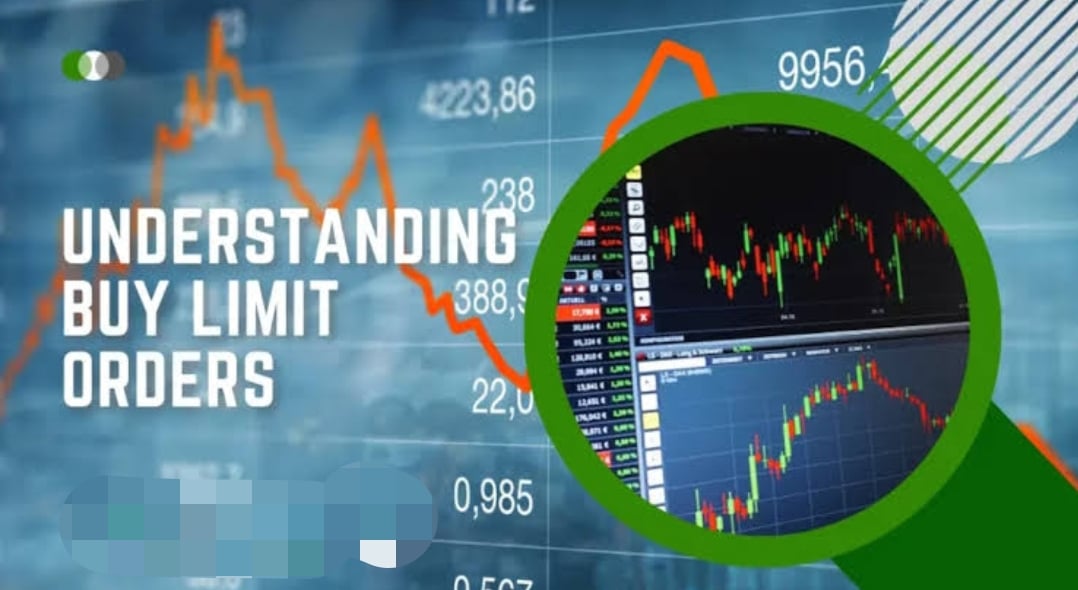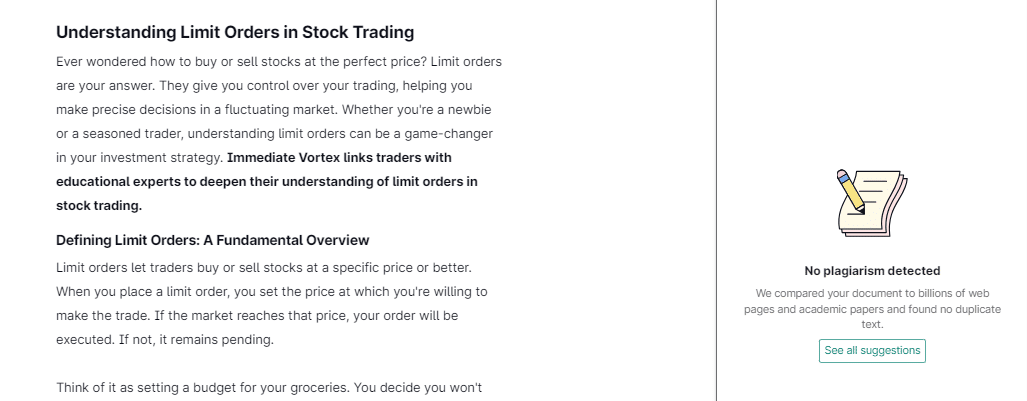Grasping The Concept Of Limit Orders in Stock Trading

Ever wondered how to buy or sell stocks at the perfect price? Limit orders are your answer.
They give you control over your trading, helping you make precise decisions in a fluctuating market.

Whether you’re a newbie or a seasoned trader, understanding limit orders can be a game-changer in your investment strategy. Immediate Mentax links traders with educational experts to deepen their understanding of limit orders in stock trading.
Defining Limit Orders: A Fundamental Overview
Limit orders let traders buy or sell stocks at a specific price or better. When you place a limit order, you set the price at which you’re willing to make the trade.
If the market reaches that price, your order will be executed. If not, it remains pending.
Think of it as setting a budget for your groceries. You decide you won’t pay more than $2 for an apple.
If the price drops to $2 or less, you buy the apple. If it doesn’t, you wait. This way, you have control over how much you spend.
In stock trading, this control can help you get a better deal. For example, if you want to buy a stock currently trading at $50, but you believe it’s worth $45, you can place a limit order at $45. Your order will only execute if the stock price falls to $45 or below.
Similarly, you can set a limit order to sell a stock at a higher price than its current trading value, ensuring you get the return you’re looking for.
Limit orders are especially useful in volatile markets where prices can swing dramatically. They offer a way to avoid overpaying for a stock or selling it for too little. This makes them a valuable tool for both new and experienced traders.
The Role of Limit Orders in Financial Markets
Limit orders play a key role in maintaining stability and order in financial markets.
They provide a mechanism for buyers and sellers to express their price expectations clearly, which helps create a more transparent trading environment.
Imagine a busy marketplace where everyone is shouting prices. It’s chaotic. But if buyers and sellers could write down the prices they’re willing to accept, it would be much calmer.
This is what limit orders do for the stock market. They create a record of what price levels traders are willing to trade at, which can help smooth out price movements and provide liquidity.
For individual traders, limit orders offer a strategic way to manage risk. They allow you to set price points that align with your investment strategy, rather than reacting emotionally to market fluctuations. For instance, during a market downturn, a limit order can prevent you from selling a stock at a panic-driven low price.
Institutional traders also use limit orders extensively. They help manage large trades without causing significant market impact.
By breaking down large orders into smaller limit orders, these traders can achieve their desired positions without driving prices against themselves.
Strategic Advantages of Utilizing Limit Orders
Limit orders offer several strategic benefits for traders. First and foremost, they provide price control. By setting a specific price, you ensure you never overpay or undersell. This is crucial in a market where prices can change rapidly.
Another advantage is the ability to plan your trades. With limit orders, you can set your buy or sell points in advance.
This means you don’t have to constantly monitor the market, giving you more time to focus on other aspects of your investment strategy.
Limit orders also help in managing risk. For example, if you’re concerned about a stock’s potential decline, you can set a limit sell order at a price that limits your loss. On the flip side, if you’re looking to buy a stock but don’t want to pay more than a certain amount, a limit buy order ensures you get the stock at your desired price.
Moreover, limit orders can be used in conjunction with other trading strategies. For instance, you can use them to enter a market position and set a stop loss limit order to protect your investment. This layered approach allows for a more controlled and disciplined trading strategy.
For beginners, limit orders can be a great way to learn about market dynamics.
By setting price points and seeing how the market reacts, new traders can gain insights into price movements and develop better trading instincts.
Conclusion
Limit orders empower traders with control and precision. By mastering their use, you can navigate market volatility with confidence.
Take charge of your trades, minimize risks, and maximize gains. Start using limit orders today to enhance your trading success.






